Little Naish: The folly that went from dilapidated garden shed to beautiful modern home
A long-lost glass house in the grounds of a Somerset house has been transformed with a glass extension that will inspire anyone thinking of building, as Arabella Youens found out.
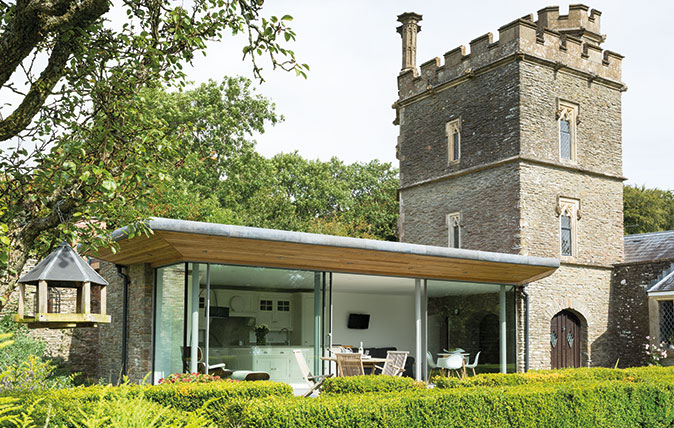
It was the remains of a long-lost glass house found in the walled gardens of Little Naish, near Clapton-in-Gordano, Somerset, that eventually led to planning permission for the addition of this strikingly modern glass box to the side of an early-Victorian tower.
The original Grade II-listed building had been constructed as a folly in the Gothic-Revival style. Built in the early 19th century by James Adam Gordon, a local politician who owned plantations in the West Indies, it lay in the grounds of Naish (pronounced ‘Nash’) House, a 17th-century manor that was destroyed by fire in 1902.
Although the main house was eventually rebuilt, Little Naish had lain empty for 25 years before the Somerset-based architect and conservation specialist James Barattini (now retired) was invited to consult in 2008. ‘The house was in a pretty parlous state,’ he recalls. ‘Little Naish was known as the “gardener’s cottage”, but it wasn’t habitable. It was more of a bothy and a space to keep tools in than anything else.’
However, the owners were keen to convert the folly into a habitable house and, for that to work, planning permission and listed-building consent were required to extend the original footprint of the property.
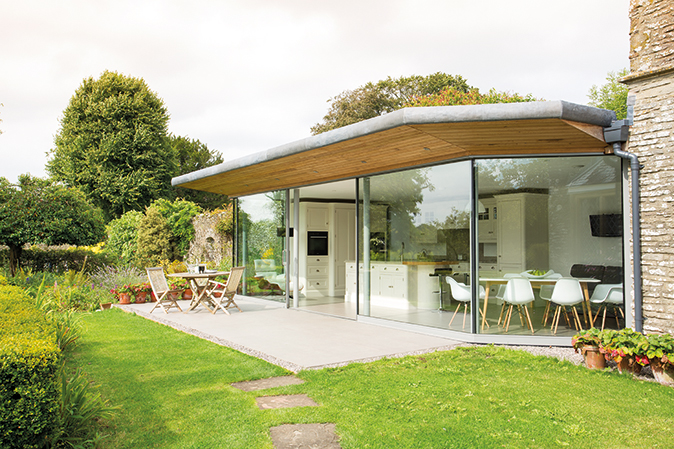
It wasn’t the first time that an owner had tried to rescue the building, but all previous attempts had failed. ‘I felt very strongly that what it needed was a modern extension, but, in order to start the process, I had to go back to basics and do a historical analysis on the original estate,’ explains Mr Barattini. ‘When I discovered the remnants of the Victorian glasshouse in the corner of the walled garden, just next to the folly, it validated what I was trying to do with the building.’
The local planning department agreed to the installation of a glazed building on the proviso that it didn’t interfere with or interrupt distant views. The pavilion extension was designed to minimise the connection to the building, as there was no evidence of a formal link between the greenhouse and the folly on the original layout. ‘We didn’t want it to swamp the tower, rather that it just floated on the edge,’ adds Mr Barattini.
One of the strongest stipulations by the owners – one a passionate gardener – was that the space should blur the boundaries of the inside and outside. This was achieved through the use of floor-to-ceiling sliding glass doors on two sides and having one flooring solution to create a seamless transition between the terrace and the kitchen.
Sign up for the Country Life Newsletter
Exquisite houses, the beauty of Nature, and how to get the most from your life, straight to your inbox.
The pavilion’s position, facing south south-west, was ideal as it affords extensive views over the six-acre walled garden. ‘However, with that aspect, you could also scorch in there, hence the need for the solar shading in the form of the large roof overhang. In the summer, it offers protection from the overhead sun, but, in the winter, when the sun is lower in the sky, it lets the light in,’ explains Mr Barattini.
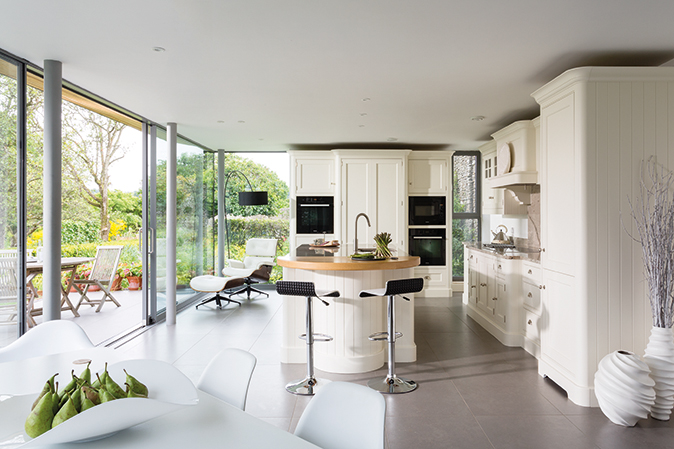
The clients commissioned designer Tom Howley to create a traditional kitchen that would not only marry sympathetically with the historical aspects of the original building, but would also become a feature of the modern extension. ‘They were very specific about creating a feeling of bringing the outdoors in and having a room that would be used for living, dining and cooking,’ says Mr Howley.
‘One of the main challenges was that achieving this light, open-plan finish meant there was limited space available for cabinetry. We had to be very clever with how we got everything the clients wanted into the kitchen.’
The Shaker-style Summerville range was chosen and painted in Tom Howley’s in-house colour of Meadowsweet – a light, neutral shade that emphasises the natural light that floods the room. An island with a breakfast bar takes central stage and forms a subtle division between the cooking and dining spaces. Unusually, the sink was built into the island specifically so that the splendid garden views could offer some diversion from the chore of washing-up.
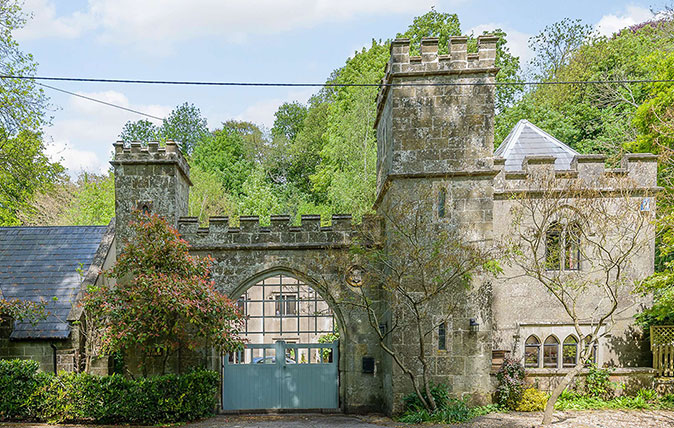
Credit: The Gate House
A pocket-sized castle in Salisbury that is both adorable and affordable
Salisbury is one of the finest cities in the south of England – and if you're looking to move there,
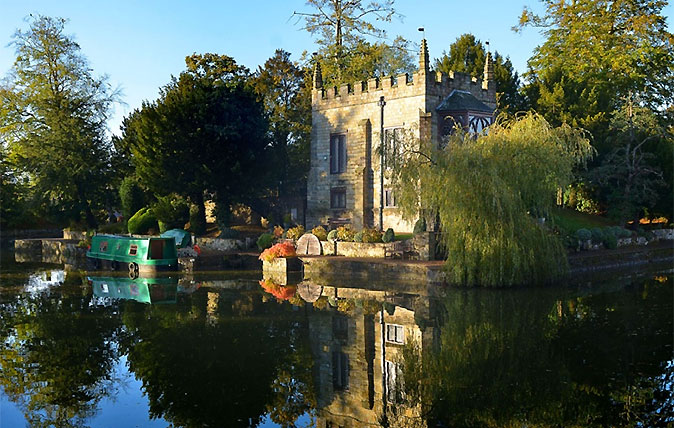
Credit: Starborough Castle - Henry & James
A picture-perfect castle for sale just outside London
Could this be England’s smallest castle? Well, not quite. But it might be the most practical.
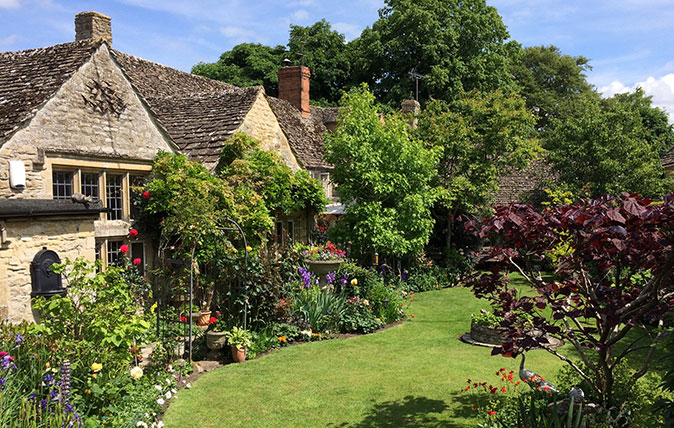
A romantic cottage in the heart of the Cotswolds at the price of a small city flat
A heart-stoppingly romantic cottage in the Cotswolds has come to the market at a price which will make city dwellers
Toby Keel is Country Life's Digital Director, and has been running the website and social media channels since 2016. A former sports journalist, he writes about property, cars, lifestyle, travel, nature.
-
 Designer's Room: A solid oak French kitchen that's been cleverly engineered to last
Designer's Room: A solid oak French kitchen that's been cleverly engineered to lastKitchen and joinery specialist Artichoke had several clever tricks to deal with the fact that natural wood expands and contracts.
By Amelia Thorpe
-
 Chocolate eggs, bunnies and the Resurrection: Country Life Quiz of the Day, April 18, 2025
Chocolate eggs, bunnies and the Resurrection: Country Life Quiz of the Day, April 18, 2025Friday's quiz is an Easter special.
By James Fisher
